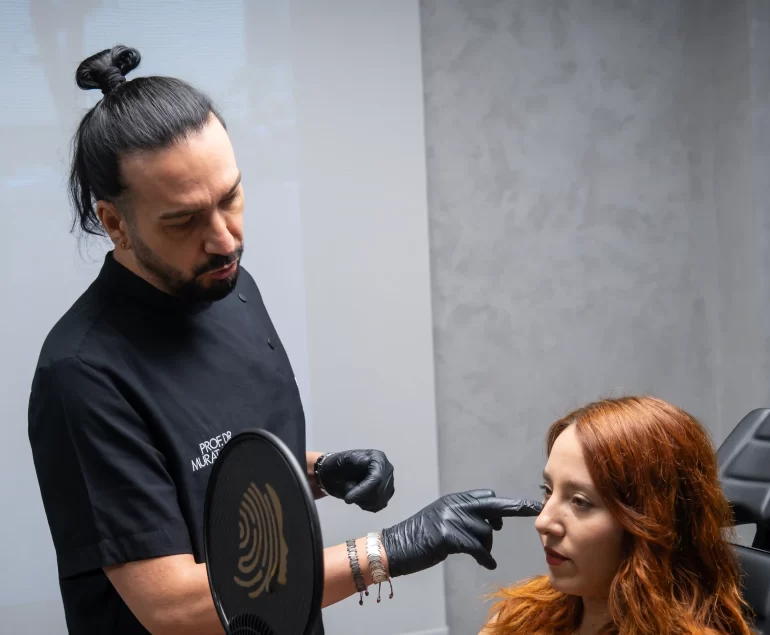Rhinoplasty, often called a nose job, is a popular cosmetic procedure. Initially, many seek it to enhance facial symmetry. Furthermore, some pursue this surgery to correct structural issues that impair breathing. On the other hand, others are drawn to it for purely aesthetic reasons. While the reasons vary, understanding the procedure is essential for potential candidates. Consequently, diving into the intricacies of rhinoplasty provides clarity to those contemplating this transformative journey.
Table of Content
Rhinoplasty Risks
Every surgical procedure, including rhinoplasty, carries inherent risks. Often called a nose job, rhinoplasty is no exception to potential complications. According to trusted medical sources like the Mayo Clinic, there are specific concerns patients should be aware of.
Primarily, there’s the possibility of bleeding post-surgery. In addition, infections might arise, posing further health challenges. An adverse reaction to anesthesia, though rare, is another concern that patients need to be prepared for. Delving deeper into nose job-specific issues, one might encounter:
- Difficulties in breathing through the nose.
- Persistent numbness around the nasal region.
- The development of an asymmetric nose.
- Prolonged pain, discoloration, or swelling.
- Noticeable scarring.
- The occurrence of septal perforation, which means a hole forms between the left and right nostrils.
- A potential requirement for follow-up surgeries.
- Changes or alterations in the sense of smell.
Furthermore, the outcome might only sometimes align with the patient’s aesthetic expectations. Sometimes, even when the procedure is executed flawlessly, the desired aesthetic result might not be fully achieved due to individual anatomical or healing factors. This doesn’t imply a failure on the surgeon’s part; instead, it emphasizes the uniqueness of each person’s body and how it responds to surgical interventions. Hence, while aiming for the ideal, the result might closely approximate the desired outcome.
Lastly, while the surgeon strives to offer the best possible outcome, pushing the boundaries of safe and feasible isn’t advisable. Taking undue risks can pave the way for future complications. As with all surgeries, an open conversation about these risks with a healthcare provider ensures a well-informed decision.
Rhinoplasty Procedure Details
Engaging in rhinoplasty, commonly known as a nose job, entails a comprehensive process, both preceding and during the procedure. Before undergoing the transformative surgery, one attends a consultation with their surgeon. In this preparatory phase, the surgeon meticulously evaluates and documents facial dimensions. Moreover, patients can present their expectations visually through photographs they desire to emulate post-surgery. It becomes crucial for patients to inform the surgeon about medications and supplements they are on, especially specifying the dosages.
Transitioning to the day of the surgery, rhinoplasty is generally an outpatient procedure, ensuring patients can return home the same day. However, they require someone to accompany them back and watch over them for the night. Depending on individual cases and preferences, anesthesia options vary between general and local combined with intravenous sedation. The choice of venue, whether a hospital or outpatient facility, rests on multiple factors, including the surgeon’s recommendation and the patient’s comfort.
Delving into the procedural details, the surgeon strategically incisions inside the nostrils. There’s also a possibility of an external incision at the nose base. They then proceed to lift the skin off the nasal bones and cartilage. Adjustments to the bone and cartilage may involve reduction, augmentation, or rearrangement, aligning with the desired outcome. Once reshaped, the skin is carefully draped back over the nasal framework. Tiny stitches come into play to ensure the skin remains intact.
Interestingly, actor Glen Coco Oropeza once revealed his introspection about his nasal structure. He recalled, “I began my acting journey in 2019, and when seeing myself in my first show, [the web series] Handsome, I started to scrutinize my nose.” The insight sheds light on the profoundly personal reasons people might have for considering a nose job beyond mere aesthetics.

1976 yılında İzmir’de doğan Prof. Dr. Murat Songu, İzmir Atatürk Lisesi sonrası 1994 yılında Ege Üniversitesi Tıp Fakültesi’ne girdi. Kulak Burun Boğaz Hastalıkları uzmanlık eğitimini Celal Bayar Üniversitesi’nde tamamladı. 5 Eylül 2014 tarihinde Ankara Dışkapı Yıldırım Beyazıt Hastanesi’nde yapılan sözlü sınavı ile “Kulak Burun Boğaz Hastalıkları Doçenti” olmaya hak kazandı. Türk Kulak Burun Boğaz ve Baş Boyun Cerrahisi Derneği Bursu’nu kazanarak Şubat 2016 – Mayıs 2016 tarihleri arasında Amerika’da Pittsburgh şehrinde UPMC (University of Pittsburgh Medical Center)’da Robotik Cerrahi Ünitesi’nde çalıştı. 2 Nisan 2021 tarihinde “Kulak Burun Boğaz Hastalıkları Profesörü” olmaya hak kazandı. Evli ve iki çocuk (Ayşe Songu, Selim Songu) babasıdır.




